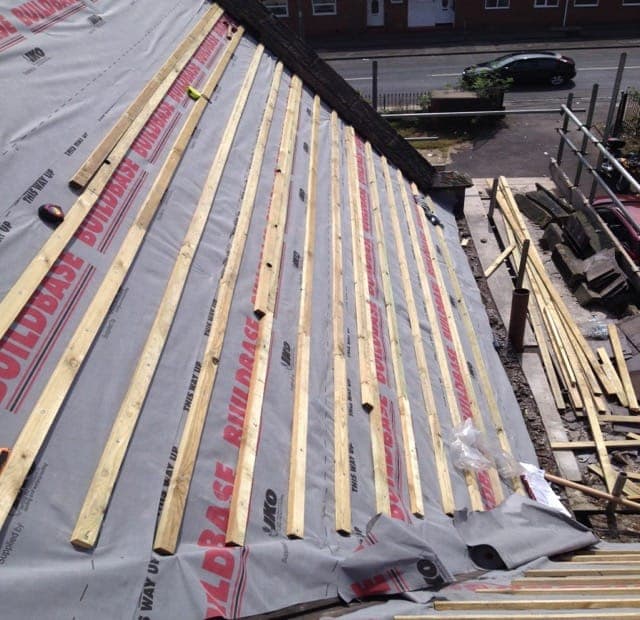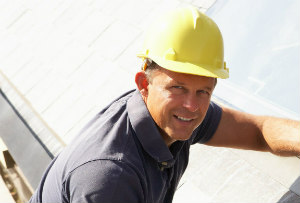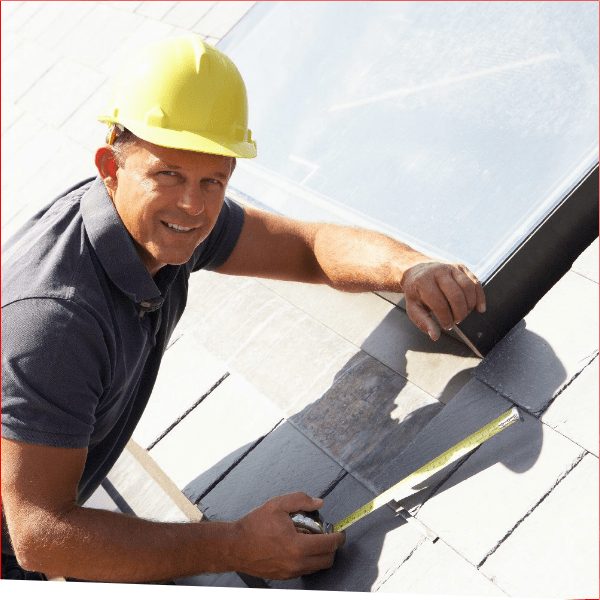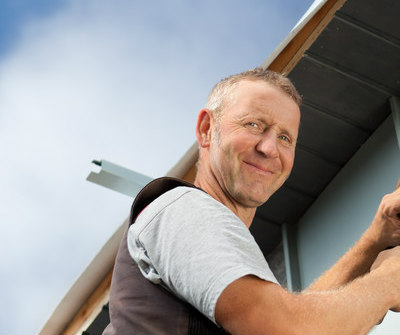
Roofing Installation & Replacement Dublin
In Dublin, Ireland, the importance of professional roofing installation and replacement cannot be overstated. This crucial service, delivered by skilled experts, utilizes advanced materials and techniques to ensure the longevity and aesthetic appeal of both residential and commercial properties.
It includes maintenance, repairs, and replacements, all aimed at enhancing the structural integrity of the building. This article provides a comprehensive overview of this growing industry, equipping readers with essential knowledge on this significant aspect of construction.
Important Takeaways
- The selection of appropriate roofing materials is crucial for weather resistance and to complement the architectural style and climate of Dublin.
- Professional roofing services ensure safe and compliant installation, provide comprehensive warranties, and enhance the aesthetic appeal and value of the property.
- Different roofing materials have varying lifespans, influenced by factors such as location, weather conditions, and maintenance.
- The process of roofing installation involves assessing the existing roof condition, careful removal of the old roof, meticulous installation of protective layers, and comprehensive inspection for quality assurance.
Awareness of the Elements of Roofing Installation
In the realm of roofing installation and replacement, it is crucial to understand the fundamental elements that contribute to a robust and durable roof structure.
The first and foremost element is the roofing material. There is a wide array of materials available in the market, such as asphalt shingles, metal, clay, concrete tiles, and slate. Each of these materials has its own unique characteristics, benefits, and drawbacks. Making an informed choice depends on various factors like the architectural style of the building, local climate, budget, and personal preference.
The second important element is the underlayment, which is a water-resistant or waterproof barrier installed directly onto the roof deck. It provides an extra layer of protection from extreme weather conditions.
The third critical component is the roof deck, which serves as the foundation for your roof. Typically, it is made of plywood or oriented strand board (OSB), providing a solid surface to attach shingles and protecting the house from potential damage.
Lastly, supportive elements like the drip edge, flashing, and gutters play a significant role in driving water away from the roof and preventing moisture-related problems. These elements, when correctly installed, ensure long-lasting performance of your roof.
Essential Elements in Roof Replacement & Installation
Why are certain elements considered essential in the process of roof replacement and installation?
These are key components that ensure the longevity, resilience, and structural integrity of the roof. They involve a complex interplay of materials, techniques, and expert knowledge to create a roof that can withstand the elements, provide insulation, and enhance the aesthetic appeal of the home.
Here are the four main elements that are deemed essential in roof replacement and installation:
- Quality Materials: This includes weather-resistant roofing sheets, underlayment, flashing, and shingles that can withstand harsh weather conditions.
- Skilled Labour: Experienced and skilled roofers who are adept at installing and replacing roofs to the highest standards.
- Safety Measures: Appropriate safety protocols to protect workers and the property during the installation process.
- Proper Ventilation: Ensuring adequate ventilation to prevent moisture build-up, which can cause damage over time.
These elements are critical in guaranteeing the durability and functionality of a roof. Neglecting any of these can lead to costly repairs and premature roof failure.
Therefore, when considering roof replacement and installation in Dublin, Ireland, it is essential to prioritize these elements for a long-lasting, high-quality roof.

Professional Roofing Services in Dublin
Ensuring a durable and resilient roof requires not just high-quality materials, but also the expertise of professional roofing services, a crucial factor for property owners in Dublin, Ireland. The subtleties of roofing, from selecting materials to weatherproofing and insulation, necessitate a deep understanding that only professionals can provide.
Professional roofing services in Dublin are well-versed with the city’s unique climatic conditions, an important factor in selecting the appropriate roofing materials. Moreover, these professionals adhere to local regulations and industry standards, ensuring a safe and compliant installation. They also possess the necessary tools and equipment for a seamless installation process.
The value proposition of professional roofing services extends to the post-installation phase. They provide comprehensive warranties, covering both labor and materials, ensuring peace of mind for property owners. The benefits of such services are not simply functional, they also impact the property’s aesthetic appeal and value.
Whilst it may be tempting to consider a DIY approach, the long-term repercussions of potential errors can result in greater costs and risks. Therefore, investing in professional roofing services in Dublin is a sound decision for property owners desiring mastery over their roofing needs.
Different Types of Roofing Materials and Their Lifespan
Regularly, homeowners face the decision of choosing the best roofing material, and understanding the lifespan of each option is crucial for making an informed choice. The roofing material not only affects the aesthetic appeal of your home but also plays a significant role in the property’s durability.
Among the commonly used roofing materials in Dublin, the following four are notable due to their lifespan and performance:
- Asphalt Shingles: This material is popular due to its affordability and easy installation. An asphalt shingle roof can last between 20-30 years.
- Metal Roofing: Known for its durability and resistance to extreme weather conditions, metal roofing has a lifespan of about 40-70 years.
- Tile and Slate Roofing: This choice offers an elegant look and exceptional longevity, with a lifespan of around 50-100 years.
- Flat Roofing: Typically used for extensions and commercial buildings, it lasts approximately 10-15 years.
Each roofing material has its unique set of advantages. Factors such as location, weather conditions, and maintenance play significant roles in determining the lifespan of these materials. Therefore, it’s essential to consider these factors along with the lifespan while choosing the most suitable roofing material for your property.
The Process of Roofing Installation in Depth
The comprehensive roofing installation process, a vital component in property construction, commences with a thorough assessment of the existing roof condition and the selection of suitable roofing materials. This initial stage involves detailed examinations of the roof structure to identify any damages or issues that may interfere with the installation. It is paramount to ensure the structural integrity of the roof to avoid future complications.
Once a detailed assessment has been completed, the next step involves the careful removal of the old roof. This process must be carried out with precision to prevent any damage to the underlying structures. The old roofing materials are disposed of responsibly, adhering to all environmental regulations.
Following the removal of the old roof, the installation of the new roofing materials begins. This involves laying down a protective underlay, which serves as a barrier against water and ice infiltration, followed by the actual roofing material. Each layer is meticulously installed and secured to ensure maximum durability and longevity of the roof.
The final phase involves a comprehensive inspection to validate the quality and correctness of the installation. This meticulous process ensures a robust and durable roof, enhancing the overall value and aesthetic appeal of the property.
Key Signs Your Roof Needs Replacement
Several indicators can signal that your roof requires replacement, ranging from visible damage to subtle changes in energy consumption. These telltale signs are often easy to spot, but can be overlooked if you are not vigilant.
- Age of the roof: Most roofs have a lifespan of 20 to 25 years. If your roof is beyond this age, it’s a clear indication for a replacement.
- Missing or damaged shingles: If you observe missing, cracked or curling shingles, it’s a sign of roof decay.
- Granules in gutters: Shingles start to lose more granules towards the end of their life cycle, which ends up in the gutters.
- Sunlight through roof boards: If you see sunlight coming through the roof boards in your attic, it’s a definite sign of a potential leak.
Taking these signs into account is crucial for maintaining the integrity of your home. Ignoring them could lead to more extensive and costly repairs in the future.
As a homeowner, regular monitoring and maintenance of your roof should be a priority to ensure its longevity and performance.

How to Choose the Right Roofing Contractor in Dublin
Choosing a trustworthy roofing contractor in Dublin involves assessing at least five key factors, including experience, reputation, and certification, but also pricing and warranty conditions. An experienced contractor will have years of expertise, ensuring they are well-equipped to tackle any roofing challenge. Reputation is equally important. Look for online reviews or ask for references to ensure the contractor is reliable and delivers high-quality work.
Certification from recognized industry bodies provides assurance that the contractor adheres to industry standards and practices. A fair pricing model allows you to get the best value for your money, but remember, the cheapest option isn’t always the best. Lastly, a good warranty condition protects you from any future issues arising from the installation or replacement.
The table below simplifies these factors:
| Key Factors | Why it’s important |
|---|---|
| Experience | Ensures contractor’s skill and reliability |
| Reputation | Affirms quality of work |
| Certification | Guarantees adherence to industry standards |
| Pricing | Helps get the best value for money |
| Warranty | Protects against future issues |
Cost Factors for Roofing Installation and Replacement
Understanding the five main cost factors for roofing installation and replacement can help homeowners in Dublin make informed budgeting decisions. Being aware of these factors allows for a more accurate cost estimation and aids in the selection of appropriate roofing materials and contractors.
The cost of roofing installation and replacement is influenced by several variables, including:
The size of the roof: Larger roofs require more materials and labour, thus increasing the overall cost.
The type of roofing material: Different materials come with different price tags. High-end materials like slate or metal can significantly increase the cost.
The complexity of the roof design: Complex designs with many angles or chimneys require more time and skill to install, thus increasing labour costs.
The location of the property: Prices can vary based on geographical location, with urban areas typically being more expensive than rural ones.
Knowing these factors, homeowners in Dublin can plan their roofing installation or replacement with a clear budget in mind, ensuring the process is as smooth and cost-effective as possible. By considering these elements, you can make confident, informed decisions about your roofing project.
Managing and Maintaining Your New Roof Post-Installation
Effective management and maintenance of your newly installed roof is a crucial factor in ensuring its longevity and performance. Once the roof has been successfully installed, the responsibility shifts to the homeowner to ensure that it is well maintained.
The first step is regular inspection, which should ideally be done twice a year or after severe weather conditions. This will enable early detection of any potential issues such as leaks, cracks, or damaged shingles.
It’s vital to keep the roof and gutters clean. Debris, leaves, and moss can cause water to pool and lead to damage. Therefore, regular cleaning is recommended.
Ventilation and insulation are also paramount in maintaining the integrity of your roof. Proper ventilation prevents heat and moisture buildup, which can cause rafters and sheathing to rot.
Lastly, when damage is detected, timely professional repairs are crucial. While minor issues may be addressed by the homeowner, significant repairs should always be handled by professional roofing contractors to ensure quality and safety.
Environmental Impact of Roofing Installation and Replacement
How does roofing installation and replacement in Dublin, Ireland, impact the environment, and what measures are being taken to mitigate these effects?
The construction industry contributes significantly to environmental degradation, and roofing is no exception. The disposal of old roofing materials in landfills, the energy consumed during manufacturing and installation, and the release of hazardous substances are all part of the environmental footprint of roofing.
However, several measures are being implemented in Dublin and across Ireland to reduce this impact. Here are some examples:
- The adoption of eco-friendly roofing materials such as recycled shingles and metal roofing which are both durable and recyclable.
- Improved waste management practices, including recycling and repurposing discarded roofing materials.
- The use of energy-efficient roofing systems that contribute to a reduction in overall energy consumption.
- Encouraging the use of green and cool roofs that help in regulating building temperature, reducing the urban heat island effect, and promoting biodiversity.
Through these measures, the roofing industry in Dublin and the rest of Ireland is moving towards more sustainable practices, helping to protect the environment while providing efficient and durable roofing solutions. The journey towards environmental sustainability is ongoing, and every step counts.

Frequently Asked Questions
What Is the Average Timeline for a Roofing Installation Project in Dublin"
The timeline for a typical installation project, subject to weather and material availability, averages between 1 to 3 weeks. However, specific durations vary based on the size and complexity of the project.
Are There Specific Permits Required for Roof Replacement in Dublin
Yes, specific permits are required for roof replacement in Dublin, Ireland. These are obtained from the local council and ensure compliance with building regulations, ensuring safety and quality of workmanship.
What Are Some of the Safety Measures Taken During Roofing Installation or Replacement?"
Safety measures during roofing installation include proper training, use of safety equipment like harnesses and helmets, regular site inspections, adherence to safety regulations, and maintaining a clean, organized work environment to prevent accidents.
What Are the Different Warranties Offered by Roofing Contractors in Dublin?"
Different roofing contractors offer various warranties, including manufacturer’s warranties on materials and contractor’s warranties on workmanship. These ensure the durability and quality of the roof, providing homeowners with long-term peace of mind.
How Does Weather Condition Affect the Roofing Installation or Replacement Process in Dublin?"
Weather conditions significantly impact the roofing process. Extreme temperatures or precipitation can delay installation or replacement, while strong winds can damage materials. Therefore, optimal weather is crucial for a successful, timely, and efficient roofing project.
Conclusion
In conclusion, the significance of roofing installation and replacement in Dublin, is undeniable. It is a critical service that provides structural integrity, weather resistance, and aesthetic appeal to buildings.
Professional roofing services, incorporating high-quality materials and advanced techniques, contribute significantly to the construction industry. Selecting a competent contractor, understanding cost factors, and maintaining the roof post-installation are key to enhancing roof lifespan and building longevity.
The environmental impact of these processes also warrants consideration.
